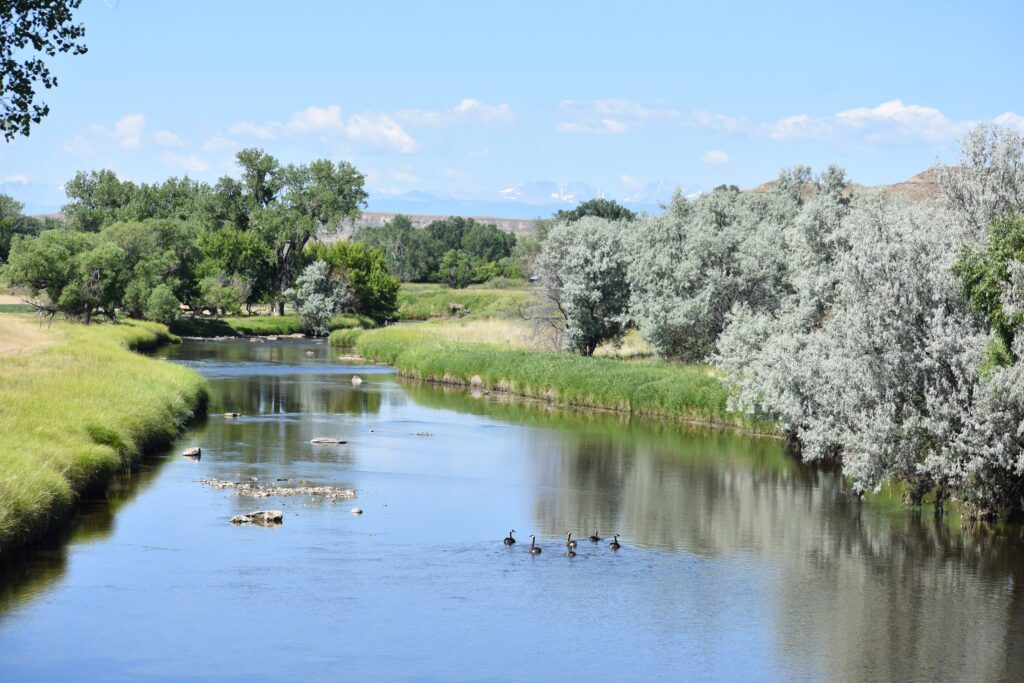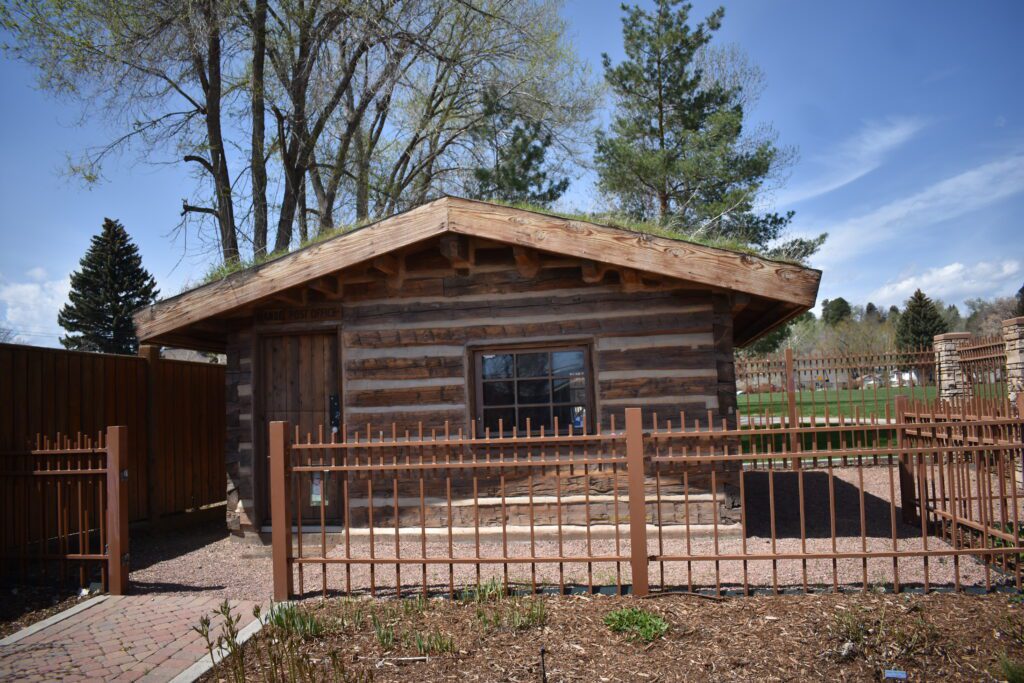News
History: City of Sheridan Came of Age in 1903

On May 11 of 2024, Sheridan turns 142 years old. In May of 1903, she was a brash youngster, who just came of age. As a celebration of her birthday, a 21st birthday party was planned to celebrate.
The Sheridan Post, March 26, 1903

The Sheridan Commercial Club took up the challenge.
The Sheridan Post, May 7, 1903 – Anniversary Festivities. The people of Sheridan, under the direction of the Commercial Club, will celebrate the 21st birthday of the town at the Akins Opera house next Monday night, commencing at 8 o’clock. A very fine program has been prepared, and will prove of decided interest, The Sheridan chorus, composed of all the choirs of the city will furnish the vocal music and the new band, under the leadership of Prof Dripp will furnish the instrumental.
The closing number on the program will be a combination number of the chorus and band and will be well worth hearing. Amusing anecdotes and interesting facts, with the colorings of early days, will be told, Sheridan is the largest town In Northern Wyoming, and is having marvelous growth, yet but few of the residents who are enjoying present day prosperity know about the crude beginnings.
After the party, The Sheridan Post, May 21, 1903, had this report of the festivities.
Good Addresses Dealing with the Past, Present and Future of Sheridan Delivered At The 21st Anniversary Celebration. E. Gillette Tells of the Coming of the Railroad, and Herbert Coffeen Pictures Sheridan’s Future.
The Coming of the Railroad. In the winter of 1886 a survey party fort he B. & M. railroad started work at Broken Bow, Nebraska, and located a line westward. The country through the sand hills of Nebraska was wild, game being plentiful. I remember seeing in one small valley a herd of elk, deer and antelope at one time. The members of the party looked forward to locating in some part of northwestern Nebraska where a large town would soon be started, and thought the promised land was in sight on reaching the Box Butte country, where a few sod shanties had been erected. Here a number of quarter sections of land were purchased or filed upon, and the boys figured that as soon us the survey work was completed, they would go back and farm the lauds secured. The survey was extended to Deadwood, in the Black Hills, and later we took up the line at the old T. U. T. ranch, where Edgemont now stands, and pushed the line up Stockade Beaver creek and on northwest to the Belle Fourche river, thence up Donkey Creek and down Wild Horse Creek to Powder River. The water was bad all along this line and we all looked forward to the time when we would approach the distant Big Horn mountains sufficiently near to get a drink of clear, pure cold water from some mountain stream.

Clearcreek was finally reached, and an air of contentment and better health was evidenced at once by the men and livestock in the party. However, it was not until the line was pushed over the hill west of Prairie Dog creek and the neat little town of Sheridan was discovered nestling in the valley below at the junction of the Big and Liittle Goose creeks that the new Eldorado had been found.
All thought of going back to the Box Butte table was at once abandoned, and claims could be had at a discount. In the fall of 1890 we camped at the buildings on Big Goose creek known as the Holdrege ranch which gave us the best quarters, all around, that we had had for years. A large Canada Goose was discovered circling over Big Goose Creek, and when he finally settled in a secluded bend of the stream, a gun was procured and the game bagged. The cook prepared a dinner and people from the town were invited to celebrate the affair with us, (which they did) much to the pleasure apparently of all concerned.
We searched diligently for more geese to repeat the occasion, but had to rely on B&M. turkey(ham and bacon) for subsequent feasts. The new town of Sheridan was composed of as pleasant a class of people to meet as could be found anywhere in the country. Harmony and a united effort for the good of the town was shown everywhere.
Recently, at a Chamber Luncheon in Sheridan, the city administrator and the county commissioner commented on how the county and the municipalities in Sheridan County work so well together.
The article continues. The boys were in clover and the work on the survey while camped here was like a continual holiday. We organized a whist club, composed of the Postmaster W. D. Wrighter, C.H. Grinnell, H.C. Alger and myself. The young people then, as now, were always ready for a dance. John D. Helvey joined the party while we wer a bars and performed excellent work while the survey lasted, and has continued to do so. A good many of us became interested in the town and promised to come back and live here, for we knew that no better people or country existed, and we are glad we had the good fortune to join this community.
Coffeen took up the story talking about The Future of Sheridan. Someone has said that “fate has in store for men exactly what they are preparing themselves for,” if this be true, we are now reaping exactly I what was prepared for us twenty-one years-ago today. Much credit must be given to the pioneers who could then see the possibilities for a town at the forks of the Goose creeks when little or nothing was known of the resources at hand, save the vast cattle industry. The future of Sheridan is indeed promising, and it is with much satisfaction that we have tonight listened to the tale of that little piece of brown paper, the starting point of the coming city of Wyoming. Who can say what will be accomplished in another twenty-one years? We who are here in Sheridan at this time can have more to say than anyone else, and we can build for the grand future that will surely be ours if we so decide. Many have called us “the Denver of the northwest.” We are not yet a Denver, but we can be if we choose to be, and can have a population of thousand within the next twenty-one years if we take advantage of the resources now known to be about us on every hand, awaiting development. Our vast range interests will in all probability be as great then as now. Our farmlands, that to some deem to have reached a limit, can be doubled, yes tripled and quadrupled in extent by the building of reservoirs.
For the benefit of any who think our entire water supply is now utilized, I might illustrate it best by the remarks of one our townsmen who recently returned from a visit to his old home in Colorado. He said, “When I left Colorado they did not have any more land under irrigation than we now have, and they had every drop of water in the streams appropriated. Now they have five times as much under irrigation, all reclaimed by the building of reservoirs, and they save every drop of water and use it. Why, don’t you know,” said he, “when I was down there they were roping the big cakes of ice and dragging them out on the land for fear some of the water would get away.” We have as much water and as many available sites for reservoirs as Colorado, and we must invite people and capital to come and assist in their development.
Did these men, who founded Sheridan twenty-one years ago, realize that under every part of the townsite was to be found valuable coal deposits? How many of the residents of Sheridan today are thinking about what will eventually be done with the seven veins of coal, aggregating eighty feet in thickness, which is known to be beneath us? Will not this industry alone, which is as yet in its infancy, prove to be one that will give us an enormous growth and support a very large population as soon as capitalists can be shown that it is here? Within a few months, it has been stated, a second mine will be opened and developed by parties who, we are told, do things on a large scale. These deposits will likely attract other railroads, and it is not reasonable to think that the four or five great railroad systems headed in this direction will always keep their terminals in the little Dakota towns, that are on the map simply because they are the end of the line. Along the foothills of the mountains we find deposits of building stone and marble of excellent quality, gypsum, limestone, potters’ clay, fire clay, lithographic stone: and further back, gold, silver and copper, which will in time be brought to the notice of those who know how to profit by them and turn the raw material into a manufactured product.
We must invite people. A practical way to do so is to take advantage of the beauty of the mountains to attract the summer tourist. The tourists, we are told, bring more money into Colorado than all of her mines and agriculture combined, and she is the greatest mining state in the Union and not the least in agriculture. Our mountains are superior for camping and the establishment of summer resorts to any other mountain range so close to the east by direct railroad connection. Let the people of the east know of the wonderful canyons, the pine-clad hills and the rugged snow capped peaks, and give them half a chance to be taken care of and they will soon be attracted by the trainload. The hot nights of the corn belt will not be tolerated by them when they learn of the cool and restful nights in the Big Horn mountains.

One person who came to Sheridan and decided to stay was Ben Vannoy, from North Carolina. He married a Sheridan homesteader’s daughter, and staked his claim near Clearmont. His descendants still live around the Clearmont, Buffalo and Sheridan area.
Vannoy was two years younger than the City of Sheridan, having been born in March of 1884 in North Carolina. He came to Wyoming in 1905. He wrote that he saw the Bighorn Mountains and decided to stay. He said that about the train trip West.
March 24, 1905:“Myself and Tom, my neighbor, when down to the depot in Marion, Virginia. The agent said he could sell us tickets to Sheridan for $39.00. We unloaded our trunks then and there. Also the lunch boxes our mothers had sent along.” Later, they “….found a boarding house….where we got a good meal for 15 cents.”
On March 27, he writes, “We left Lincoln Nebraska, that night. Next morning, March 27, 1905, was my 21st birthday. It lasted thru Nebraska, across South Dakota, and well into Wyoming.”
These far-sighted founders of the town of Sheridan were correct in many of their visions of the future. Coal for years provided a booming economy, irrigation has increased agriculture production in the area, and tourism is big business today, generating more than $120 million in local revenue yearly.
So, today, May 11, celebrate Sheridan’s Birthday.

